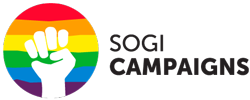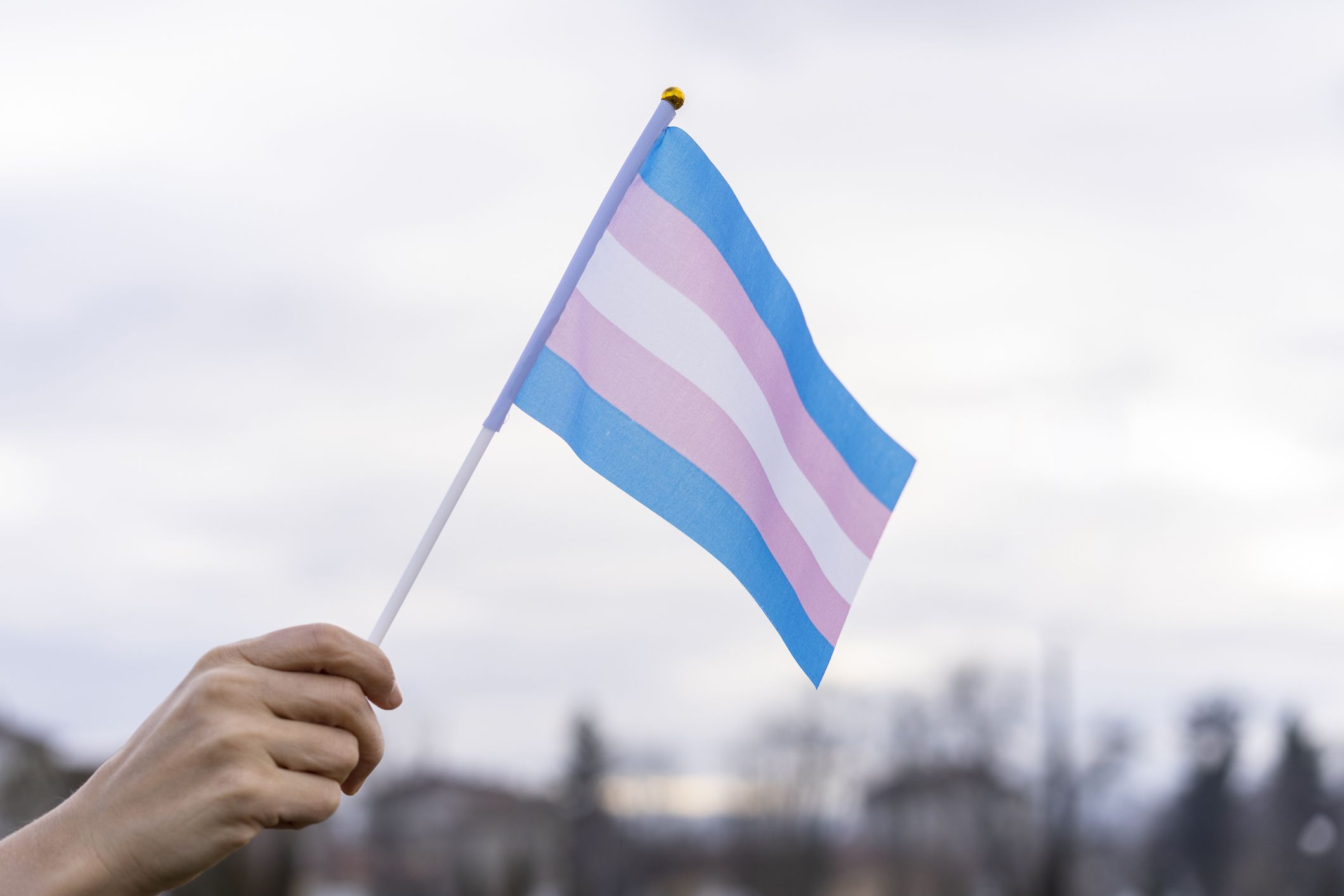In the context of globalisation it seems only natural to organise big regional campaigns that unite people from different countries. But is it really a good idea? Which tools work best? Is TikTok a suitable platform? Let’s take a look at these questions with ECOM – the Eurasian Coalition for Health, Rights, Gender and Sexual Diversity. ECOM has been conducting since last year an awareness raising campaign called We Are Alike, and has some valuable thoughts to share.
Tell us a bit about the context for this campaign
The context is different In each country but the one thing they have in common is that the visibility of Trans people is very low. We discussed this issue during a meeting with our national partners and our network’s Trans People Working Group. This is how the idea was born that we should do something to increase the visibility of Trans people in the media across EECA countries. However, at the time we didn’t know how to do it or which platforms we should use.
So what exactly is this campaign?
The main objective of the campaign is to increase the positive perception of Trans people among cisgender women from 18 to 35 years old in EECA countries, and to reach them via video messages.
The idea behind the campaign is that Trans people would create the videos themselves. We called for submissions on social media with support from our national partners in the regional Trans Map project. Trans people submitted their scripts, and we selected the best ones, offering full production support, including studio, photography, and editing. Our aim was to simplify the process for participants, so all they had to do was be themselves in the studio, while we handled the rest. The selected participants were from Ukraine, Kyrgyzstan, Armenia and Moldova.
Most videos are in Russian, but some participants preferred to speak their native languages. In that case, their videos were subtitled in Russian so that they would be disseminated more broadly.
How did you define your target audience?
The target audience for this campaign are cisgender women under 35 who use social media and have a neutral attitude towards Trans people. Trans people themselves think that cisgender women are most likely to change their attitude from neutral to positive.
Did you conduct any research before launching the campaign?
We held focus groups in 5 countries of the region to find out how Trans people want to be represented in the media. Focus group participants expressed a desire for more positive media representation of Trans people, citing that current coverage is often negative. They simply want to convey their presence, normality, and similarity to others through the campaign’s concept. And this is how the title – We Are Alike –was born.
After the focus groups, it took us about a year to get the campaign ready for launch.
Why did you choose TikTok?
As it’s unlikely that our target audience of cisgender women would follow ECOM”s account, we established a separate account for this campaign
TikTok’s key advantage is its ability to rapidly promote a new account. TikTok is a relatively new platform with algorithms that allow you to promote your content without a significant financial contribution. As a result, it’s easy to reach new audiences that are outside your usual bubble. It’s way better than Instagram where a hundred of your followers might see your reels, a couple will like it, and that’s pretty much it.
In summary, TikTok is a great tool if you don’t have much money to invest in Instagram or YouTube promotion.
@mupohozhu Трансгендерный переход? 🏳️⚧️✊🏼 #похожемыпохожи #мыпохожи #трансгендерность #транспарень #украина ♬ Polozhenie – Izzamuzzic Remix – Скриптонит
Were any local organisations involved?
Local organisations helped us share the open call and find participants. It’s important to have trust, and ECOM is not well known to everyone in the region, so the help of local activists who have connections with the community was really valuable.
They also provided on-site assistance including communication with participants, translation, and other necessary support.
What challenges did you face? How did you deal with them?
Due to the invasion of Ukraine, our plans for the videos couldn’t be carried out fully. Our production partner, based in Ukraine, became inaccessible for in-studio work. Consequently, some videos had to be made by the authors with guidance from our production team, who handled the editing afterwards.
Unfortunately reactions to the campaign videos were predominantly negative. In response, we only replied to comments that perpetuated stereotypes about Trans people, providing explanations for why those views were incorrect. We avoided lengthy, unproductive debates.
Another challenge was to find participants for the videos, that’s why during the second phase of the campaign we decided to motivate them with some material incentives. This might seem like a controversial decision, but we believe it’s only fair, because people devote their personal time to this project.
How would you assess the results of the campaign so far?
After the first videos were published, we learned from the audience feedback that basic knowledge about Trans issues was lacking. That’s why we made several educational videos with experts.
This was the first-ever campaign of such a scale produced in our region. Usually, we see campaigns in English but this one was in a language that was more familiar to the audience and Trans people could see familiar faces and find it more relatable.
The campaign assessment showed that about 60% of our audience were women aged from 18 to 35, which means that we have indeed managed to reach our target audience.
During the first cycle (last year), we published 33 videos, which had about one million views. The most popular video was viewed 200 000 times. In August 2023, we launched the second cycle. The most popular video of the second cycle reached 1.5 million views.
@mupohozhu Мы поняли, что эта рубрика вам ноавится больше всего😅 #мыпохожи #транслюди ♬ оригінальний звук – MЫ ПОХОЖИ
In total, the videos have reached a total of 3.5 million views, with over 8 000 comments.
What impresses us most and motivates to continue is that people kept viewing our videos even though we hadn’t published anything for almost a year. Our account was kind of frozen until recently, but the old videos still attracted viewers. This means that such content is important for people.
How is the second cycle of the campaign different from the first one?
This year, we have videos from Armenia, Georgia, Kyrgyzstan and Kazakhstan.
Last year, because of the war, we couldn’t film all the videos in the studio as we had intended, Most videos were filmed at home by the participants. This year, all of the videos are filmed professionally. We hired a crew, and gave them clear instructions.
This year, we filmed 20 videos, as opposed to 33 last year. Another difference is that last year, most of the videos were in Russian, while this year participants speak in their native language, and we add Russian subtitles.
Some videos this year were made using animation. For example, in one video a young woman is telling a story of her Transitioning, and there is an animated sequence showing a butterfly emerging from a cocoon.
The last difference is that in this cycle of the campaign it was Trans people themselves who made educational videos, and not medical experts as in the first cycle. In these videos Trans people themselves explain any difficult terms or processes.
Can you share some of the lessons learnt?
Filming in an unfamiliar language is challenging. During shoots, some content seemed significant, but during Translation and editing, much was unusable. This emphasised the need for interpreters at all stages, not only to Translate the footage.
It’s rather challenging to make such big regional campaigns. The context can be very different in different countries, but we had to come up with a message that would unite all of them.
This campaign required a lot of resources, both financial and human.
The initial idea was that we, as ECOM, would organise this regional campaign and then our partners in their respective countries would organise their own campaigns based on our idea. But as there aren’t many people in these countries who are ready to share their experience publicly and take part in such big campaigns, it was difficult to find enough people for both regional and national campaigns. This was something we hadn’t foreseen.
We also realised that there is a communication problem because some people from the so-called post-Soviet space refuse to speak Russian. Previously there was more flexibility, but now more and more people prefer their native languages, and Russian is losing its status as the “lingua franca” but English hasn’t replaced Russian yet. This situation makes the organisation of regional campaigns quite challenging.
Professional shooting is not always necessary. Admittedly , it looks better, but if your video is interesting and touches the audience, it won’t matter whether it’s filmed on a smartphone or using a professional camera.
Do you think it’s still a good idea to run major regional campaigns?
The EECA is too vast with many different contexts and different languages. It makes more sense to organise media campaigns on a smaller scale in smaller sub-regions. For example, a campaign targeting Central Asia or the South Caucasus would be more effective and homogenous.
When designing a campaign for the diverse audiences in the EECA region, we must consider regional tensions and conflicts. Finding a unifying factor can be challenging due to these complexities.
It is only worthwhile organising such campaigns if there is something that speaks to everyone and unites them. For example, our campaign is about Trans people, which by definition is a common ground. However, the contexts even for Trans people in our countries are different, and the languages are different. So, it’s a challenge to make them understand each other, but that doesn’t mean impossible.

